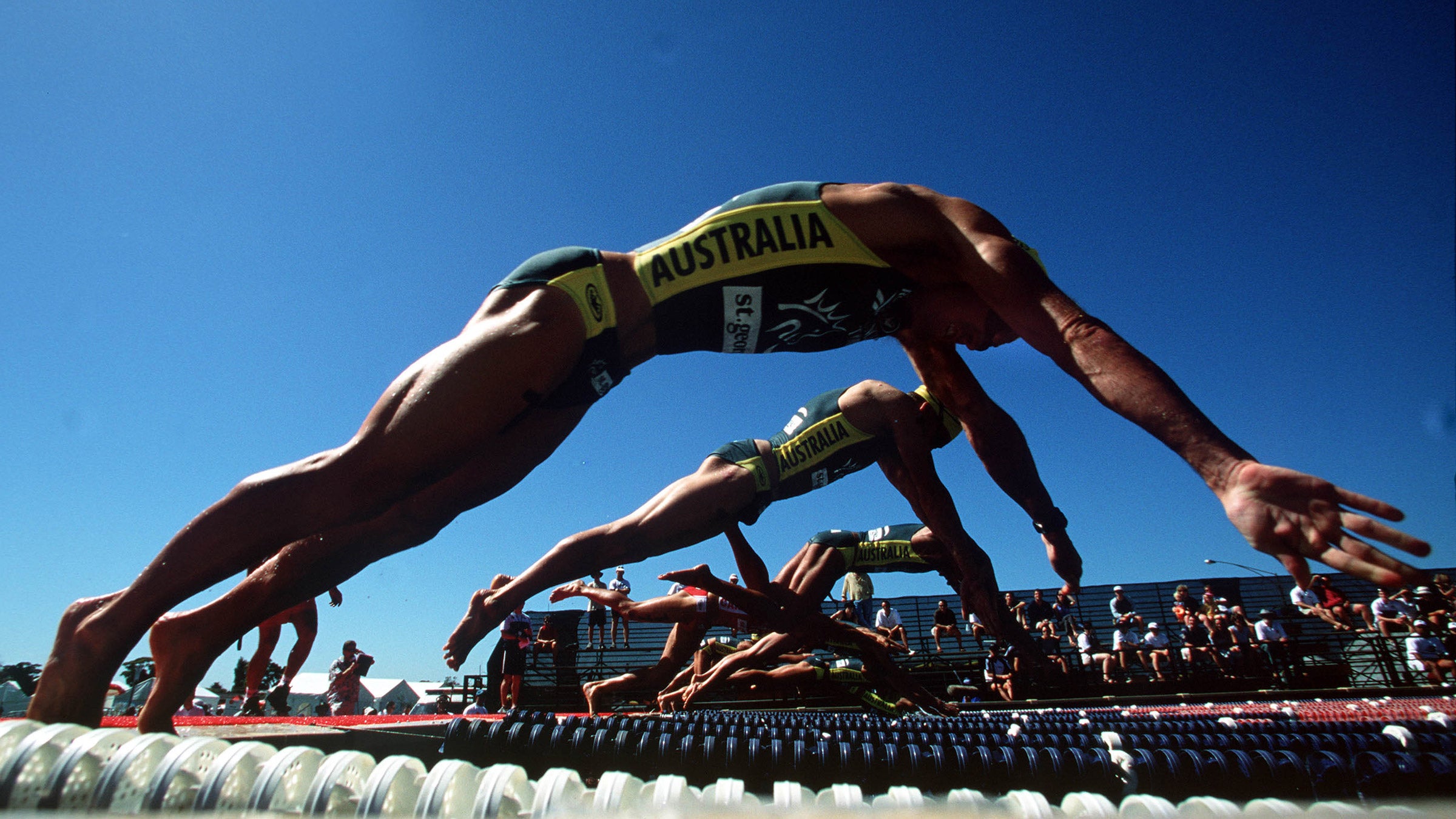Recalled: The Fast and Furious Days of F1 Racing

Brad Beven of Queensland leads the field into the pool for heat 1 of the St George F1 triathlon, part of One Summer, held at Elwood Beach, Melbourne, Australia. (Photo: Mark Dadswell/ALLSPORT)
Last week, long distance star Lucy Charles-Barclay dipped her toes into the short course world and finished an impressive second to Beth Potter in the Super League Triathlon Arena Games in London (Marten Van Riel of Belgium won the men’s event). And while the Super League, with its all-star cast and clickable social media posts, is a splashy, speedy sister to the grueling Ironman, it’s not the first time the pro triathlon scene has veered in this direction. Back in the early aughts, the Formula 1 Sprint Series served as an early predecessor to the fast and furious staged racing we’re seeing a revival of today.
The impetus of the original Formula 1 series wasn’t really different from the aim of the current Super League series or the forthcoming Collins Cup event: To create a magnetic buzz around the races and to make triathlon more spectator-friendly. After all, in any given triathlon, fans are lucky if they see the athletes do more than stream out of the swim, whoosh by on the bike a few times, and run past on their way to the finish line. But by drawing from the format of Formula 1 car racing and using loop courses where athletes pass by the same spots several times, the hope was to put on a show for spectators, both on the scene and at home.
And, in Australia, that’s exactly what happened: The F1 races drew major media interest and were broadcast on TV, creating household names out of series stars like Australia’s Brad Beven and Greg Welsh and Americans Mark Allen, Mike Pigg, and Barb Lindquist. The hype and the prize purse attracted athletes from around the world and major sponsorships, including deals with Kia and Hungry Jack’s (Australia’s version of Burger King). With the athletes wearing matching kits (bathing suits for the women and cropped singlets and speedos for the men, ‘natch), it was tough to decipher one chiseled body from the other. But, when the gun went off, there was no holding back. “They’re out there to hurt each other for the pleasure of those viewing at home and the crowd,” said a commentator during one of the televised events.
With athletes tearing through narrow, twisty streets at high speeds, bike handling skills were just as important as talent and fitness. Crashes were common–athletes would even take each other down on the run–making these events the epitome of survival of the luckiest. In a 2004 race in Sydney, the French athlete Johann Vincent went down so hard that he broke his shoulder and lost a piece of his ear (the race was halted so that medics could attend to Vincent, who made a full recovery).
This extreme flavor of triathlon wasn’t always pretty–and the standings weren’t always easy to follow (over the course of a couple of days, athletes would compete in multiple short-course races in different formats and distances, accruing points along the way, much like we see in Super League events now). But it did make for great TV. The runs often came down to epic sprint finishes with mere seconds separating the podium finishers, leaving both the competitors–and the fans watching along–absolutely breathless.
“People often reminisce with rose coloured glasses,” famed coach Brad Sutto wrote in a blog post. “But the Formula 1 triathlon series is one of those rare times in the sport that had the triathlon spectator first in mind,”
The F1 series wound down in the early 2000s, and the Super Sprint Tri Series Grand Prix introduced a similar format to the U.S. from around 2010 to 2013. Then, in 2017, Aussie Chris McCormack, who competed in the original F1 races before going on to Ironman fame, helped to spearhead Super League Triathlon. Although the pandemic has relegated the Super League events to indoor races strictly limited to the participants, the aim is to bring the races back to the streets soon so that spectators can once again witness all of the intensity and drama super-short course racing has to offer.